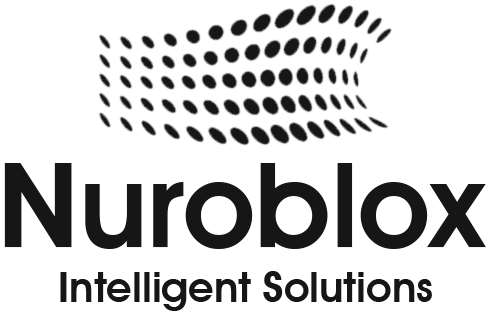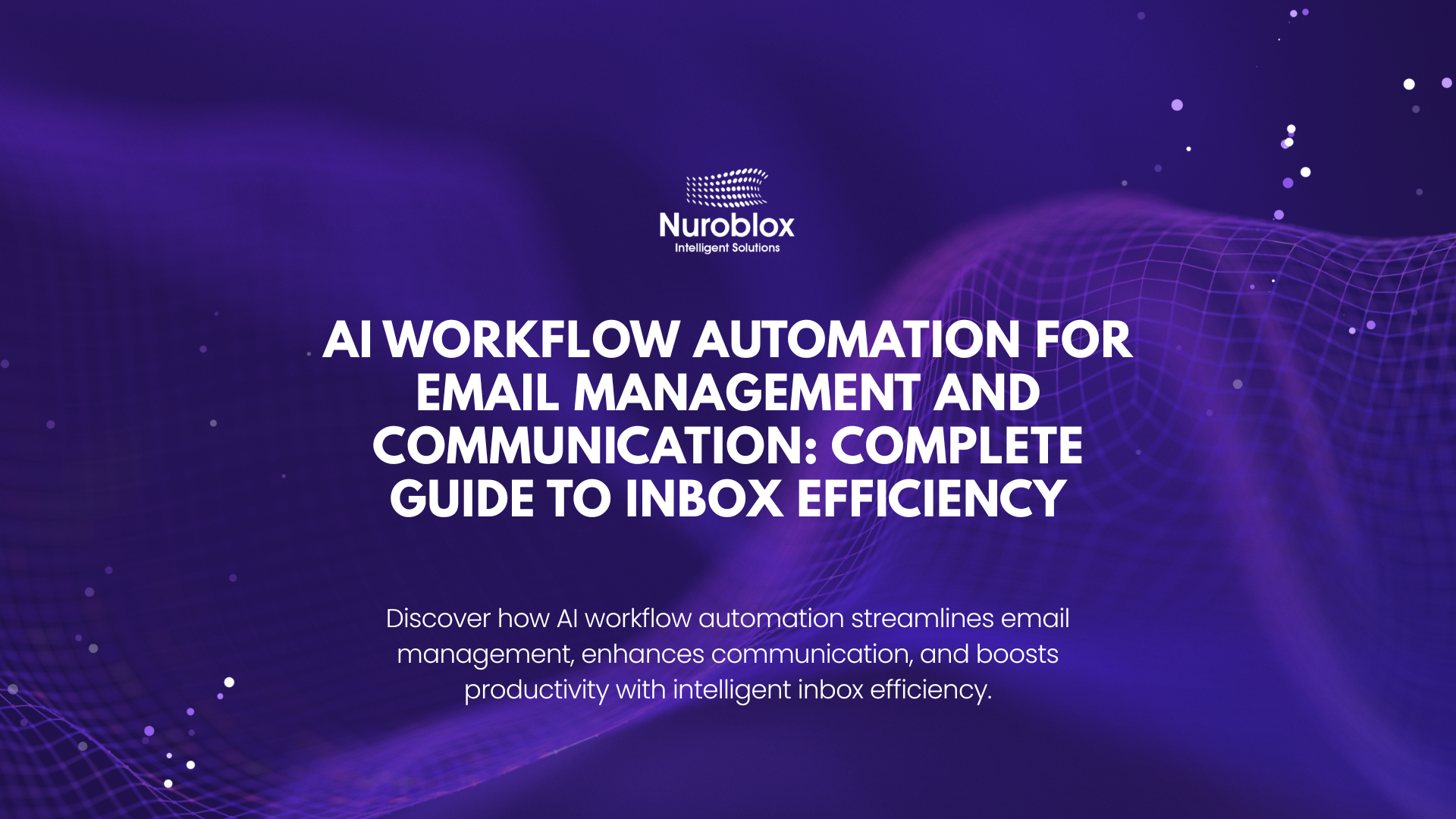AI Workflow Automation for Email Management and Communication: Complete Guide to Inbox Efficiency
Email overload costs businesses an average of $1,800 per employee annually in lost productivity. With professionals receiving over 120 emails daily, manual email management has become unsustainable. AI workflow automation for email management offers a transformative solution, enabling businesses to intelligently process, categorize, and respond to communications while reducing human workload by up to 80%. This comprehensive guide explores how artificial intelligence revolutionizes email workflows, delivering measurable improvements in response times, accuracy, and operational efficiency.
Understanding AI Workflow Automation for Email Management
AI workflow automation for email management combines machine learning algorithms with process automation to handle repetitive email tasks intelligently. Unlike traditional rule-based email filters, AI-powered systems learn from patterns, understand context, and make sophisticated decisions about email handling. These intelligent systems analyze email content, sender information, historical data, and business rules to automatically route, prioritize, categorize, and even respond to messages.
Modern AI workflow automation platforms leverage natural language processing (NLP) to comprehend email intent and sentiment. This capability enables systems to distinguish between urgent customer complaints, routine inquiries, spam, and internal communications with remarkable accuracy. Organizations implementing these solutions report 60-75% reductions in email processing time and significant improvements in response consistency.
The technology integrates seamlessly with existing email platforms like Microsoft Outlook, Gmail, and enterprise communication systems. By connecting with CRM databases, project management tools, and ticketing systems, AI workflow automation creates a unified communication ecosystem that eliminates information silos.
Key Benefits of Automated Email Workflows
Dramatic Time Savings and Productivity Gains
AI workflow automation for email management delivers immediate productivity improvements by handling time-consuming email tasks automatically. Studies show knowledge workers spend approximately 28% of their workday managing emails, equating to 11 hours per week. Automated workflows reclaim this time by instantly sorting incoming messages, extracting key information, and routing emails to appropriate team members or departments.
Sales teams benefit particularly from automated lead qualification through email analysis. AI systems scan incoming inquiries, identify high-value prospects based on predefined criteria, and immediately alert sales representatives while automatically nurturing lower-priority leads. This intelligent prioritization ensures revenue-generating activities receive immediate attention.
Enhanced Response Quality and Consistency
Automated email workflows maintain consistent communication standards across your organization. AI systems use pre-approved templates and brand guidelines to generate responses that align with company voice and values. This consistency builds customer trust and eliminates the variability that comes with multiple team members handling similar inquiries.
Natural language generation capabilities enable AI to craft personalized responses that don’t feel robotic. The technology pulls relevant information from customer databases, previous interactions, and knowledge bases to create contextually appropriate replies. Organizations report 40% improvements in customer satisfaction scores after implementing AI-powered email automation.
Reduced Human Error and Improved Compliance
Manual email processing inevitably leads to mistakes-missed messages, incorrect routing, forgotten follow-ups, and inconsistent information. AI workflow automation eliminates these errors through systematic processing that never overlooks an email or forgets a scheduled response. For industries with strict compliance requirements, automated workflows ensure proper documentation, retention policies, and data handling procedures are consistently followed.
Core Features of AI Email Management Systems
Intelligent Email Classification and Routing
Advanced AI workflow automation systems categorize emails with over 95% accuracy using supervised machine learning models. These systems analyze subject lines, body content, sender details, and attachments to determine email type and appropriate handling procedures. Categories typically include customer support requests, sales inquiries, internal communications, vendor correspondence, and urgent notifications.
Smart routing algorithms automatically forward classified emails to designated team members or departments based on expertise, workload, and availability. The system considers factors like current queue depth, individual response times, and specific skill sets to optimize assignment decisions. If primary assignees are unavailable, escalation protocols automatically engage backup resources.
Priority Detection and Urgency Assessment
AI-powered priority detection analyzes multiple signals to determine email urgency and importance. Sentiment analysis identifies frustrated or angry language indicating customer dissatisfaction requiring immediate attention. VIP sender detection recognizes high-value clients or key stakeholders whose messages warrant priority handling. Deadline extraction identifies time-sensitive requests mentioning specific dates or urgent timeframes.
The system assigns priority scores that determine queue position and notification methods. Critical emails trigger immediate alerts via SMS, push notifications, or direct escalation to managers. This intelligent prioritization ensures important communications never get buried in crowded inboxes.
Automated Response Generation
Natural language processing enables AI systems to understand email intent and generate appropriate responses automatically. For frequently asked questions, the technology retrieves answers from knowledge bases and formats them into professional replies. Response templates adapt dynamically based on customer history, sentiment, and specific query details.
Advanced systems handle multi-turn conversations, tracking context across email threads to maintain coherent dialogue. When queries exceed AI capabilities, seamless handoff protocols transfer conversations to human agents with complete context and conversation history. This hybrid approach combines automation efficiency with human judgment for complex situations.
Smart Scheduling and Follow-Up Management
AI workflow automation for email management excels at scheduling coordination and follow-up tracking. When emails contain meeting requests, intelligent systems analyze participant calendars, identify available time slots, and propose options automatically. After meetings are scheduled, automated confirmations and reminders go out to all participants.
Follow-up tracking ensures no email falls through the cracks. The system monitors responses and automatically sends reminder emails when expected replies don’t arrive within designated timeframes. For ongoing projects, scheduled check-ins maintain communication continuity without manual calendar management.
Implementation Strategies for Email Automation
Assessment and Goal Definition
Successful AI workflow automation implementation begins with thorough assessment of current email processes. Document email volumes by type, average handling times, common bottlenecks, and pain points. Identify repetitive tasks consuming significant staff time that offer the highest automation potential.
Establish clear, measurable objectives such as reducing average email response time by 50%, decreasing support ticket volume by 30%, or handling 70% of routine inquiries without human intervention. These specific goals guide platform selection and provide benchmarks for measuring success.
Platform Selection and Integration
Choose AI workflow automation platforms that integrate seamlessly with your existing technology stack. Evaluate solutions based on email platform compatibility, CRM connectivity, customization flexibility, scalability, and vendor support quality. Leading platforms like Nuroblox offer comprehensive automation capabilities with enterprise-grade security and compliance features.
Integration planning should address data migration, API connections, authentication protocols, and user provisioning. Pilot implementations in limited departments validate functionality before organization-wide deployment. Phased rollouts minimize disruption and allow iterative refinement based on user feedback.
Training Data Development and Model Tuning
AI systems require quality training data to achieve optimal performance. Compile representative email samples across all categories your system will handle. Label these examples accurately to teach classification algorithms proper categorization logic. Larger training datasets generally produce better results, with 1,000+ examples per category recommended for enterprise implementations.
Continuous model tuning improves accuracy over time as the system processes real emails. Monitor classification errors, adjust decision thresholds, and add new training examples for problematic edge cases. Most organizations achieve 90%+ accuracy within 2-3 months of active learning.
Change Management and User Adoption
Technology alone doesn’t guarantee success-effective change management ensures user adoption and maximizes ROI. Communicate automation benefits clearly, emphasizing how the system reduces tedious work rather than replacing jobs. Involve key stakeholders in implementation planning to build ownership and address concerns proactively.
Comprehensive training programs teach users how to leverage automation features effectively. Provide clear escalation procedures for handling edge cases and continuous feedback channels for reporting issues or suggesting improvements. Celebrate early wins and share success metrics to build momentum for broader adoption.
Advanced Use Cases for Email Workflow Automation
Customer Support Automation
AI workflow automation transforms customer support operations by handling routine inquiries automatically while escalating complex issues to human agents. Automated systems instantly acknowledge receipt, set response expectations, and begin processing requests. For common issues like password resets, order status checks, or basic troubleshooting, complete resolution occurs without human involvement.
Intelligent ticket creation extracts relevant information from support emails and populates CRM fields automatically. The system attaches order numbers, account details, and previous interaction history to provide agents with complete context. Category-based routing ensures tickets reach specialists with appropriate expertise.
Sales Pipeline Management
Sales teams leverage AI workflow automation to qualify leads, nurture prospects, and accelerate deal progression through email intelligence. Inbound inquiry analysis identifies prospect intent, budget indicators, and decision timelines from initial contact emails. High-quality leads receive immediate personal attention while automated nurture sequences engage lower-priority prospects.
Automated follow-up sequences maintain consistent touchpoints throughout lengthy sales cycles. The system sends personalized content based on prospect behavior, engagement levels, and stated interests. When prospects show buying signals, instant notifications alert sales representatives to engage proactively.
Internal Communication Optimization
AI workflow automation streamlines internal communications by routing requests to appropriate departments, tracking approvals, and managing information distribution. Employee questions about policies, benefits, or procedures receive instant answers from knowledge base integration. Complex inquiries automatically create HR tickets with proper categorization and priority assignment.
Approval workflows for expenses, time-off requests, and procurement move efficiently through automated routing and reminder systems. Status update emails keep requesters informed at each stage without manual intervention. This automation reduces administrative burden on support functions while improving employee satisfaction through faster resolution times.
Compliance and Legal Email Management
Organizations in regulated industries use AI workflow automation to ensure email communications meet strict compliance requirements. Automated systems scan outbound emails for sensitive information, prohibited language, or policy violations before delivery. When potential issues are detected, messages are held for compliance review with detailed flagging of concerning content.
Retention policies execute automatically, archiving emails according to legal requirements and securely deleting messages after retention periods expire. E-discovery capabilities enable rapid email retrieval for legal proceedings through intelligent search across archived communications.
Best Practices for Maximizing Email Automation ROI
Start with High-Volume, Repetitive Tasks
Focus initial automation efforts on email types with highest volumes and most standardized handling procedures. Common first targets include FAQ responses, order confirmations, meeting scheduling, and basic customer inquiries. These use cases deliver quick wins that demonstrate value and build organizational confidence in the technology.
Measure baseline metrics before automation to quantify improvements accurately. Track response times, handling costs per email, error rates, and customer satisfaction scores. Post-implementation comparisons provide concrete ROI evidence for expanding automation scope.
Maintain Human Oversight and Continuous Improvement
Even the most sophisticated AI systems benefit from human oversight to catch errors and identify improvement opportunities. Implement quality assurance processes that randomly sample automated responses for accuracy review. Create feedback loops allowing users to flag problematic automations for investigation.
Regular performance reviews analyze automation metrics, identify trends, and prioritize enhancement projects. Update training data with new examples, refine classification logic for edge cases, and expand automation coverage to additional email types. Organizations treating email automation as an evolving capability rather than one-time implementation achieve superior long-term results.
Balance Automation with Personalization
Successful email automation maintains personal connection while achieving efficiency gains. Use customer data to personalize automated responses with names, account details, and relevant context. Ensure automated messages acknowledge customer concerns empathetically rather than sounding robotic.
Establish clear thresholds for human escalation when emails express frustration, involve complex situations, or come from high-value accounts. The goal is leveraging AI workflow automation to handle routine tasks while preserving human judgment for situations requiring nuanced understanding.
Integrate Across Your Technology Ecosystem
Maximum value from email automation comes through integration with broader business systems. Connect email workflows to CRM platforms for comprehensive customer view including communication history. Link to project management tools so email-based requests automatically create tasks with proper assignment.
Integration with knowledge management systems enables AI to access current information for accurate responses. Calendar connectivity facilitates intelligent scheduling without email back-and-forth. This ecosystem approach transforms email from an isolated communication channel into an integrated business process component.
Measuring Success and Optimization
Key Performance Indicators
Track specific metrics to evaluate AI workflow automation effectiveness and identify optimization opportunities. Email response time measures the average duration between message receipt and response delivery. Target reductions of 50-70% are achievable with effective automation.
Automation rate indicates the percentage of emails handled without human intervention. Mature implementations typically achieve 60-80% automation rates for routine communications. First-contact resolution measures emails fully resolved in initial response without follow-up exchanges.
Customer satisfaction scores through post-interaction surveys reveal automation impact on experience quality. Staff productivity metrics track time savings and workload reductions enabling focus on higher-value activities. Cost per email processed demonstrates financial ROI through reduced labor requirements.
A/B Testing and Experimentation
Continuous optimization through structured testing improves automation performance over time. Test different response templates to identify language that generates highest satisfaction and engagement. Experiment with classification thresholds to optimize balance between automation confidence and human escalation rates.
Routing algorithm adjustments can improve workload distribution and reduce response time variability. Priority scoring modifications ensure genuinely urgent emails receive appropriate handling without excessive false positives. Document testing methodology, results, and insights to build institutional knowledge about optimization best practices.

Multimodal Communication Integration
Next-generation AI workflow automation platforms will seamlessly integrate email with chat, voice, social media, and video communications. Unified interfaces present complete conversation histories across all channels, enabling consistent experiences regardless of communication method. AI agents will intelligently recommend optimal channels based on message urgency, complexity, and customer preferences.
Predictive Email Management
Advanced predictive analytics will anticipate email needs before messages arrive. Systems will identify patterns indicating upcoming inquiry spikes, proactively draft response templates, and allocate resources preemptively. Predictive follow-up recommendations will suggest optimal outreach timing based on historical response patterns and engagement data.
Enhanced Personalization Through AI
Sophisticated natural language generation will create highly personalized email content that adapts tone, detail level, and formatting to individual recipient preferences. AI systems will learn communication styles of different customers and mirror those preferences for more natural interactions. Emotional intelligence capabilities will detect subtle sentiment cues and adjust response approaches accordingly.
Conclusion – Transform Your Email Management with AI Workflow Automation
AI workflow automation for email management represents a paradigm shift in business communication efficiency. Organizations implementing these intelligent systems achieve dramatic productivity improvements, enhanced response quality, and measurable cost reductions while improving customer and employee satisfaction. By automating repetitive email tasks, businesses free valuable human resources for strategic activities requiring creativity, judgment, and personal connection.
Success requires thoughtful implementation combining appropriate technology selection, comprehensive training, and continuous optimization. Start with high-value use cases, measure results rigorously, and expand automation scope based on demonstrated ROI. The most effective approaches balance automation efficiency with human oversight, ensuring technology enhances rather than replaces the judgment and empathy that build lasting relationships.
Ready to revolutionize your email workflows with intelligent automation? Explore how AI workflow automation platforms can transform your communication processes and drive measurable business results.


